Originally published in PEN November
written by Richard J. Atwood
Here are more books about hemophilia for younger readers. In the August issue of PEN, we surveyed books with fictional main and supporting characters who happen to have hemophilia. Other literary genres, such as biography, time-travel fantasy, as well as some unexpected references, also include hemophilia. Something for everyone.
Follow your curiosity by exploring different genres of literature for younger readers. I suggest the following books for your enjoyment and learning.
Biography
The Uncanny (Sterling, 1998)
Peter Hepplewhite and Neil Tonge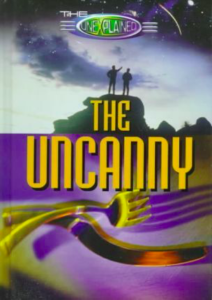
The Unexplained series of children’s books for young adults includes this story of how Rasputin, or the Mad Monk, used his powers to heal a joint bleed that Alexei Romanov, son of the Russian tsar, experienced because of his hemophilia in 1907. The text teases the reader, but doesn’t supply enough information on the full story of Rasputin.
Blood Red Snow White: A Novel of the Russian Revolution (Orion, 2007)
Marcus Sedgwick
Though this children’s biography is based on documented facts, it could also be considered a spy novel. In 1913, Arthur Ransome, a writer of children’s books, leaves his family behind in England to become a newspaper correspondent in St. Petersburg. There he learns of Alexei, who has hemophilia, and of Rasputin with his healing powers. Ransome marries the private secretary of Leon Trotsky (1879–1940; a leader of the Russian Communist Party after the 1917 Bolshevik Revolution), becomes a British agent, and returns to England in 1942 to write more children’s books.
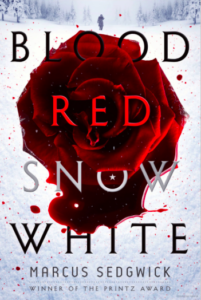
Germ Stories (University Science, 2008)
Arthur Kornberg
These 10 profiles of germs are written for young readers as poetry, with catchy rhymes accompanied by dynamic illustrations and photographs. The story of HIV mentions the fictional Bill, a second grader with hemophilia. The references to hemophilia and AIDS seem dated, but readers may not notice.
Patrick’s Wish (Second Story, 2010)
Karen Mitchell with Rebecca Upjohn
In this biography for young readers, with accompanying family photographs, Lyanne tells the story of her older brother, Patrick Fortin (1978–2001), who had hemophilia and AIDS in Canada. Patrick’s wish was a cure for AIDS, and before her brother died, Lyanne promised to tell Patrick’s story.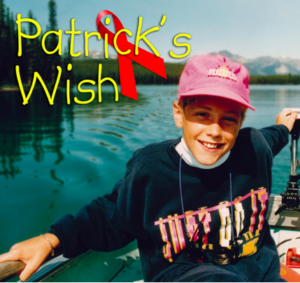
The Quiet Hero: A Life of Ryan White (Indiana Historical Society, 2015)
Nelson Price
This young adult biography summarizes the accomplishments of Ryan White (1971–1990), who became a national celebrity because he had both hemophilia and HIV. Ryan wanted to continue attending school in Indiana even with serious medical conditions. Taking advantage of all the publicity, Ryan became a spokesperson for AIDS education. Unfortunately, while hemophilia was controlled, AIDS was deadly. This book helps us remember Ryan.
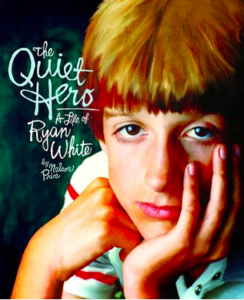
Time-Travel Fantasy
Travel through the space-time continuum is a popular topic for young readers.
The Curse of the Romanovs (Margaret K. McElderry, 2007)
Staton Rabin
Alexei Nikolaevich Romanov, 12-year-old son of the Russian tsar, has hemophilia. He uses visualization techniques taught by Rasputin to save his own life by escaping Russia in 1918. Alexei travels through time and space to New York City in 2010. There he meets Varda Ethel Rosenberg, his 15-year-old distant cousin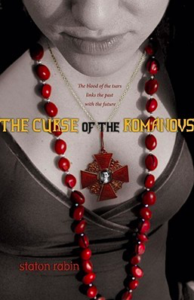 whose father with hemophilia died of AIDS. Varda saves Alexei by traveling back to St. Petersburg in 1918. Ages 12 and up.
whose father with hemophilia died of AIDS. Varda saves Alexei by traveling back to St. Petersburg in 1918. Ages 12 and up.
Secrets of the Survivors (Xlibris, 2008)
Mark L. Eastburn
This young adult fantasy novel, written by an author with von Willebrand disease, tells the story of 10-year-old Alex Hidalgo and his younger sister Katherine, from Philadelphia. The siblings are contacted by survivors of an intelligent ancient reptilian civilization from 65 million years ago. In their struggle to save planet Earth, Alex and his sister enlist three other classmates, one of whom has hemophilia.
The Queen Must Die: Chronicles of the Tempus (Atlantic, 2010)
K.A.S. Quinn
The author admits that she “tinkered” with the facts in this children’s novel, part of a trilogy that involves travel through time and space. Katie Berger-Jones falls asleep in New York City while reading the letters of Queen Victoria’s daughters, and then wakes up in Buckingham Palace in London, 1851. There Katie meets Prince Leopold, who has hemophilia, before she struggles to return home on the same day she left. Leopold was actually born in 1853.
What’s Up with Louis? Medikidz Explain Hemophilia (Medikidz, 2011)
Dr. Kim Chilman-Blair and Shawn deLoache
This storybook comic features five Medikidz who live on the planet Mediland. When Louis, on Earth, is mocked by his friends for having hemophilia, the Medikidz teleport him to their planet. Once he discovers his potential, Louis returns to Earth knowing how to properly treat his hemophilia.
Risked (Simon & Schuster, 2013)
Margaret Peterson Haddix
This science fiction novel tells the story of 13-year-old Jonah Sizemore and his younger sister Katherine, from Ohio, who help rescue 36 famous missing children from the past. These missing children, now using aliases, include Anastasia Romanova and Alexei Romanov, who has hemophilia. With the aid of a time-travel device, the children attempt to alter history by traveling back to Russia in 1918. Ages 8–12.
Hemophilia in Unexpected Places
Authors of fiction for young readers may refer to hemophilia in unexpected ways.
Tiger Eyes (Bradbury, 1981)
Judy Blume
This young adult novel follows 15-year-old Davey Wexler when she moves with her family to Las Alamos, New Mexico. At her new school, Davey views a film on hemophilia, but she already knows about hemophilia because she read Nicholas and Alexandra in eighth grade.
Fallen Angels (Scholastic, 1988)
Walter Dean Myers
In this young adult novel, Richard Perry graduates from high school in Harlem, New York, and enlists in the army in 1967. Richard declines a bonding ritual of mixing blood with other black soldiers by claiming to have hemophilia. Another soldier notes that hemophilia is a medical deferment from military service.
Billy’s Boy (Wildcat, 1997)
Patricia Nell Warren
Included in a series on gay family life, John William Heden is age 12 in 1989. He moves with his single, lesbian mother to Malibu, California. Searching for his father, supposedly a gay Olympic track medalist who donated his sperm before he died, John William meets Michael, who is conducting research at UCLA on inherited blood diseases like hemophilia.
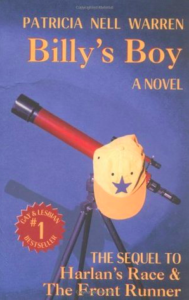
Summertime Blues (Oxford University, 2001)
Julia Clarke
In this coming-of-age novel for young adults, 17-year-old Alexander Harling, from London, responds to a rude comment about his mother. Alexander beats up the guilty classmate, who bleeds so much that Alexander thinks the boy is hemophilic and needs a transfusion.
The Healing Time of Hickeys (Polestar/Raincoast, 2003)
Karen Rivers
In this teen novel written as a diary, Haley Andromeda Harmony is a 16-year-old Canadian high school senior in 2002. Because she’s a hypochondriac, Haley searches internet sites for a definition of hemophilia. When she skins her knuckles, Haley then believes she is bleeding to death due to her supposed hemophilia.
Birthmarked (Roaring Brook, 2010)
Caragh M. O’Brien
As part of a fiction trilogy for young readers, this novel follows 16-year-old Gaia Stone, who lives in a divided country and trains as a midwife in the year 2409. Gaia learns about the health problems of dying children and infertile mothers due to inbreeding in the privileged city. The biggest concern is an increasing number of children with hemophilia. Sadly, hemophilia is not cured in the future.
The Truth About Celia Frost (Usborne, 2011)
Paula Rawsthorne
In this young adult thriller, 14-year-old Celia Frost is born with a rare blood-clotting disorder for which there is no treatment—or so her overprotective mother claims. When a classmate cuts Celia, she goes to the local hospital. Her mother refuses to allow any blood tests. After arguing with her mother, Celia learns the truth: her mother abducted her from a research laboratory, where as a child, Celia had
been experimentally injected with live viruses. To prevent the spreading of the viruses, her mother employed what is now called Munchausen Syndrome by proxy,1 imposing a fake medical diagnosis on a child. Meanwhile, the research doctor tries to capture his escaped research subject, putting Celia’s life in danger. You can find hemophilia included in a wide variety of literary genres. Literature meant for younger readers can be enjoyed by all ages, including adults. Find something you and your child like, pick up a book, and read.
- Unfortunately, the author never uses the label Munchausen Syndrome by proxy (MSBP), or ever attempts to fully explain the fictional mother’s psychiatric condition. In this rare condition, parents fabricate the physical symptoms in the child, producing a chronic fictitious disorder, most often without the child’s awareness or willingness. For hematology MSBP, this usually involves parents forcing their child to ingest an anticoagulant to induce bleeding symptoms.

